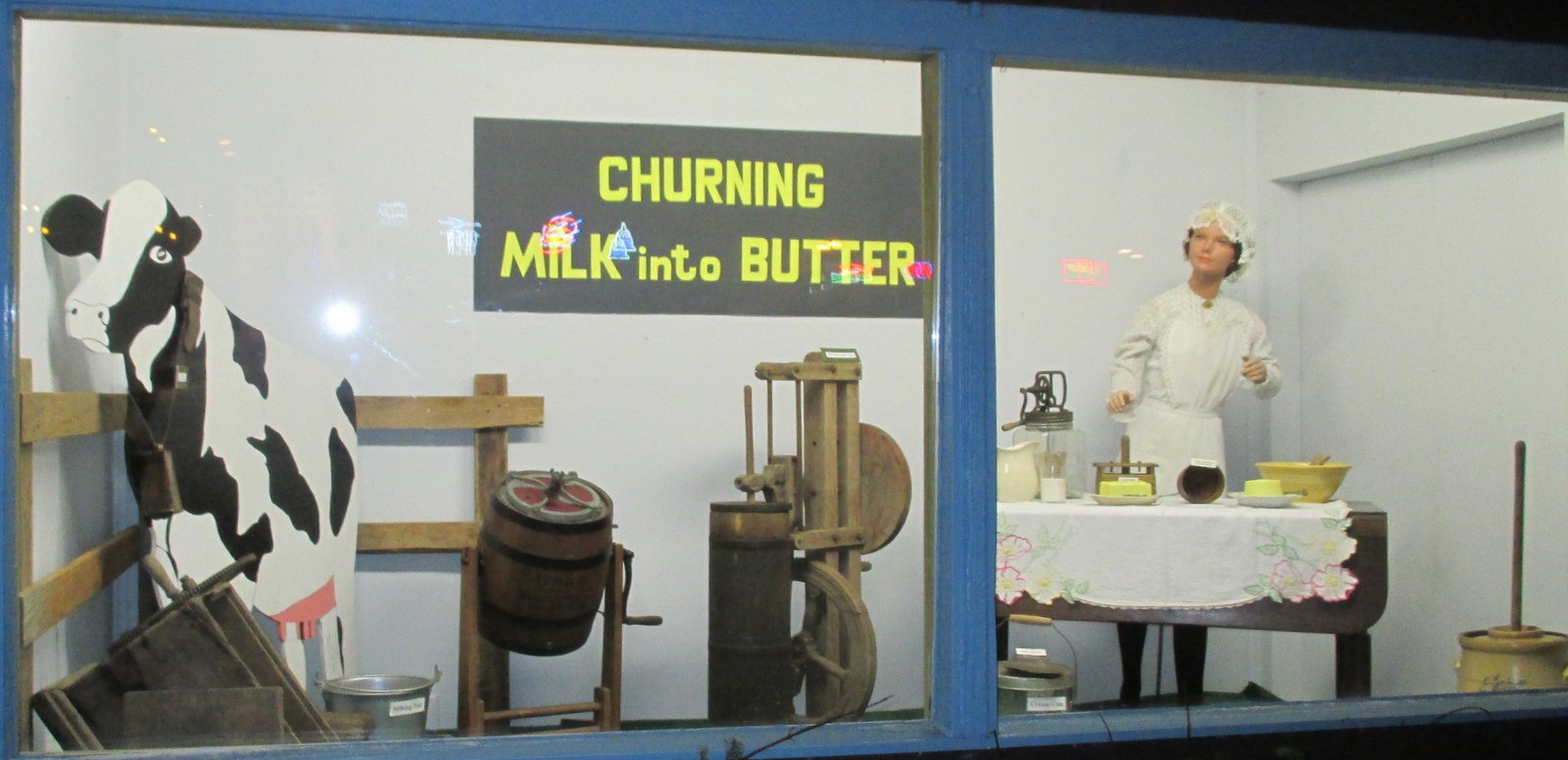
Churning Milk Into Butter
About This Project
Making Butter on the Farm
Home butter-making took time and energy, but it only needed simple equipment. After milking, containers of milk were left undisturbed to allow the cream to rise to the top. The farm wife would skim the cream off the top each morning. This cream was used for making butter. A butter churn with a wooden dasher, such as the one displayed to the right of the table, was first used. With the cream at about 60 degrees, roughly 30 minutes of the plunging action of the dasher causes the fat in the cream to form small clumps of butter. The remaining buttermilk was poured off and the churned butter was put in a bowl and rinsed with cold water. With a butter paddle, the butter was gently kneaded to make it smooth, remove excess water and incorporate a little salt for flavor. The finished butter was either ladled into a mold to be served on the table, or put into a butter tub for storage.
Making butter is an interesting process. Butter is the fat found in cream. Churning, or violently agitating the cream brings its fat globules together and causes them to clump. Cream goes through stages on its way to become butter. First it gets frothy like whipped cream. Then the foam settles into a thick pudding like state. Finally as the churning process continues, all the fat globules in the cream combine into lumps of butter. The cream becomes watery and this buttermilk is poured off. Some folks would drink the buttermilk or use it for baking. Buttermilk would also be fed to the pigs.
Generally 2 or 3 gallons of milk can yield ¾ to 1 pound of butter depending on the butterfat content of the milk. Jersey cows were preferred over our Holstein cow shown in this display because they gave milk that had a higher butterfat content.
Keeping the raw milk cold was important to keep it from spoiling. Before refrigeration, the milk was kept cool using spring water until the cream came to the top. Cream skimmers were used to lift off the cream. They were shallow with a sharp edge and had perforations to catch the cream while letting the milk drip through. After the cream was skimmed, the remaining skim milk could be consumed by the family. Setting the cream aside for 24 hours at room temperature would allow the cream to sour a bit. Souring the cream gives the butter that sweet flavor and helps the butter to “come” faster.
From the 1700’s to the 1940’s thousands of companies made butter churns in a variety of sizes and styles. First used was a plunge or dash churn where the up and down action of the wooden plunger or dasher (a flat wooden circle or cross piece attached to the round wooden handle) agitates the cream. Another common type of churn was a paddle churn with a rotating paddle attached with gears to a turning arm on the churn’s lid. The popular glass paddle churn on our table was manufactured by the Dazey Company in the early 1900’s and came in a variety of sizes. Another larger paddle churn is the box churn shown on the far left. Other types of churns were spun or rocked back and forth for the agitating action. The barrel churn does not have paddles but the rotating action of the barrel produced the butter. Note the plug at the bottom for draining the buttermilk and the glass-covered peephole at the top for viewing the butter. Barrel churns were very popular, advertised into the 1940’s by Sears and Montgomery Ward catalogs and sold for over 50 years. This model was built by Dobson Manufacturing Company of Rockford, Illinois.
Pressing the finished butter into wooden molds with carved patterns gave a classy appearance to the butter served on a table.
A Norwegian man promised this lovely woman that he would crank out 10 pounds of butter for her or write beautiful poems for her if she would be his wife. She decided to marry him for “butter or verse.”



